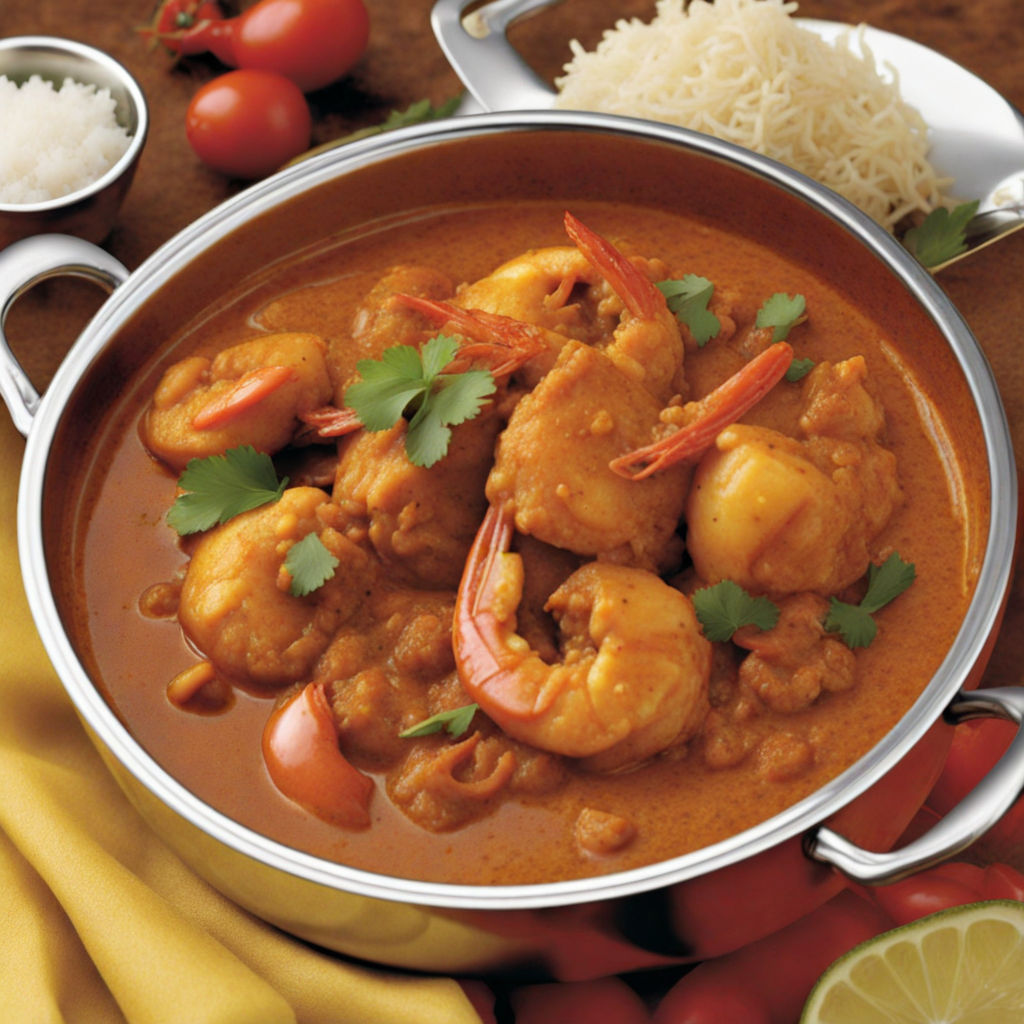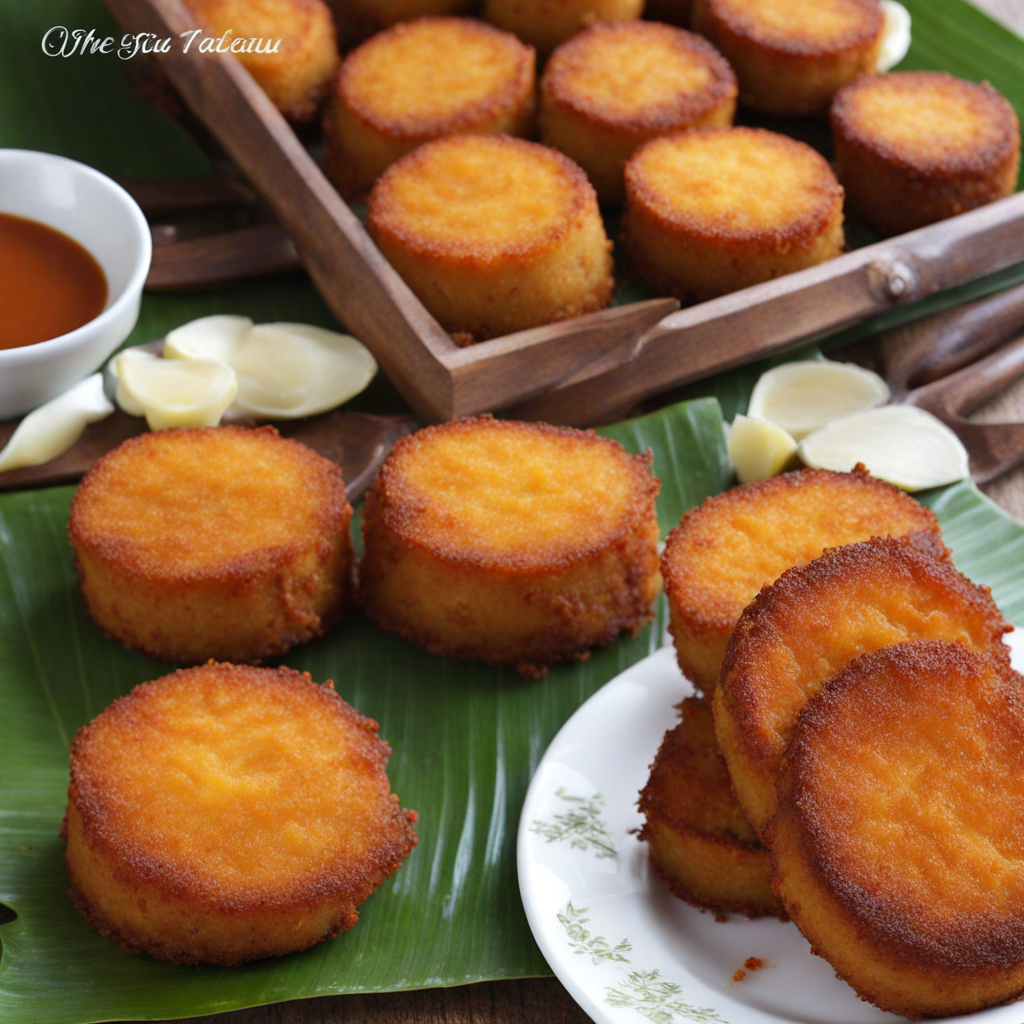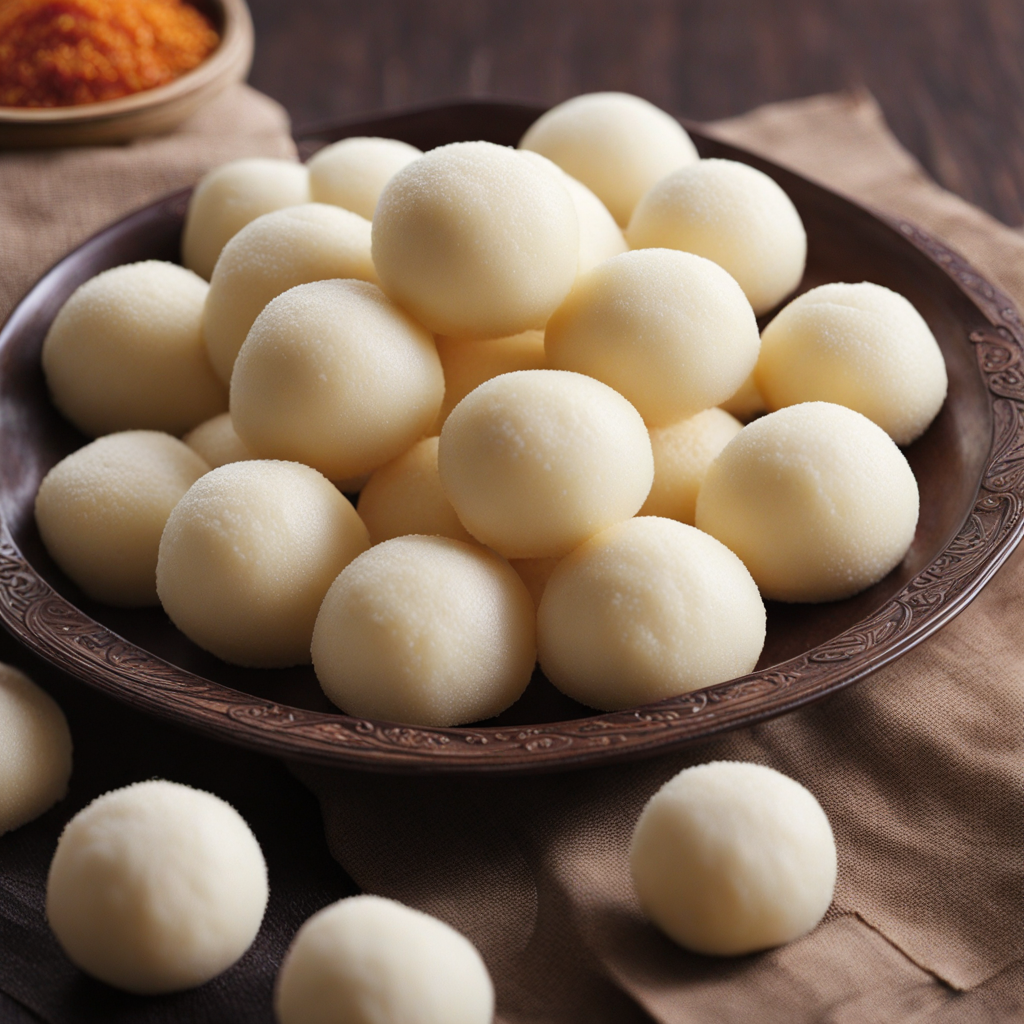Chicken and Prawn Curry
Chicken and Prawn Curry is a vibrant and aromatic dish that beautifully encapsulates the diverse culinary heritage of Mauritius. This delightful curry is a fusion of flavors, combining succulent pieces of chicken and tender prawns simmered together in a rich and fragrant sauce. The base of the curry is typically made from a blend of onions, garlic, ginger, and an array of spices such as cumin, coriander, and turmeric, which infuse the dish with warmth and depth. Fresh tomatoes and coconut milk often add a creamy texture and subtle sweetness, enhancing the overall profile of the dish while balancing the spices perfectly. What truly sets Chicken and Prawn Curry apart is the use of local ingredients and spices that mirror the island's multicultural influences. The dish often incorporates fresh herbs like cilantro and curry leaves, adding a burst of freshness to each bite. The prawns are usually sourced from local waters, ensuring they are succulent and bursting with flavor. The chicken, marinated in various spices, becomes incredibly tender as it cooks, allowing it to absorb the rich sauces and spices that envelop it. Served alongside steaming basmati rice or traditional Mauritian bread, Chicken and Prawn Curry is not just a meal; it's a culinary experience that invites you to savor the island's flavors. Each mouthful offers a delightful contrast between the savory chicken and the sweetness of the prawns, while the fragrant spices linger on your palate. Whether enjoyed at a family gathering or a local eatery, this dish is a celebration of Mauritius' rich history and culinary creativity, making it a must-try for anyone seeking to explore new and exciting tastes.
How It Became This Dish
Kari Poulet ek Camaron: A Culinary Journey Through Mauritius #### Origins and Influences Kari Poulet ek Camaron, a savory chicken and shrimp curry, encapsulates the rich tapestry of Mauritius’ culinary history. Located in the Indian Ocean, Mauritius has long been a melting pot of cultures, influenced by its indigenous population, colonial powers, and waves of immigrants. This diverse heritage has birthed a unique culinary landscape, with Kari Poulet ek Camaron standing as a testament to the island’s multifaceted identity. The origins of curry in Mauritius can be traced back to the Indian laborers who arrived on the island in the 19th century. After the abolition of slavery in 1835, the British colonial government sought a new workforce and recruited laborers, primarily from the Indian subcontinent. These workers brought with them a rich tradition of spicing and cooking, which was adapted to the local ingredients and flavors of Mauritius. In its essence, kari (or curry) typically features a blend of spices such as turmeric, cumin, coriander, and mustard seeds, along with aromatic herbs like curry leaves. The addition of coconut milk provides a creamy texture that complements the heat and fragrance of the spices. The use of chicken and shrimp reflects the island’s abundant seafood and poultry resources, making it a dish that showcases local ingredients while honoring its Indian roots. #### Cultural Significance Kari Poulet ek Camaron is more than just a dish; it represents the communal spirit and cultural practices of the Mauritian people. Food in Mauritius is deeply intertwined with social and familial bonds. Meals are often shared among family members and friends, and dishes like Kari Poulet ek Camaron are staples during gatherings, celebrations, and festivals. The act of preparing and sharing food fosters connections and reinforces cultural identity, making this dish a symbol of togetherness. Moreover, the dish reflects the island’s harmonious blend of cultures. The Indian influence is evident in the spices and cooking techniques, while elements of Creole and Chinese cuisines have also found their way into Mauritian kitchens. This fusion is particularly significant, as it highlights the island's ability to embrace and transform culinary traditions, resulting in a unique Mauritian flavor profile. #### Evolution Over Time As Mauritius evolved through the 20th century, so did its cuisine. The post-colonial period saw a resurgence of interest in local flavors and a celebration of the island’s multicultural heritage. Kari Poulet ek Camaron became emblematic of this culinary renaissance. The dish began to gain prominence not only in local homes but also in restaurants, where chefs experimented with variations that showcased the island's fresh produce and seafood. Throughout the decades, Kari Poulet ek Camaron has adapted to modern palates while retaining its traditional roots. Chefs have experimented with ingredient substitutions and cooking methods, adding a contemporary flair. Some variations might include the use of local vegetables like brinjal (eggplant) or the incorporation of local spices like the ‘piment’ (chili pepper) for additional heat. This evolution illustrates the dynamic nature of Mauritian cuisine, where tradition meets innovation. Additionally, the rise of gastronomy tourism in Mauritius has played a crucial role in the popularity of Kari Poulet ek Camaron. Visitors from around the world are drawn to the island not only for its stunning landscapes but also for its rich culinary offerings. As a result, chefs and home cooks alike have showcased this beloved dish in various forms, inviting international palates to experience Mauritian flavors. #### Cooking Kari Poulet ek Camaron: A Culinary Craft At its core, making Kari Poulet ek Camaron involves a few key steps that emphasize the importance of technique and balance. The dish is typically prepared by marinating chicken pieces in a blend of spices, allowing the flavors to penetrate the meat. Shrimp, often added later in the cooking process, provides a sweet and delicate contrast to the robust flavors of the chicken. The cooking process often begins by frying onions until golden brown, followed by the addition of garlic, ginger, and tomatoes, creating a rich base. The marinated chicken is then added and sautéed until browned, infusing the kitchen with an enticing aroma. Coconut milk is poured in to create a luscious sauce, and the shrimp is added towards the end to prevent overcooking. The dish is typically served with steamed rice or bread, allowing diners to savor the flavorful sauce. #### Modern-Day Significance In contemporary Mauritius, Kari Poulet ek Camaron continues to hold a special place in the hearts of locals. It is often featured in family meals, celebrations, and even festive occasions like weddings and religious festivals. The dish represents not only culinary heritage but also the resilience and adaptability of the Mauritian people, who have managed to preserve their culture while embracing change. Furthermore, as Mauritius faces the challenges of globalization, the preservation of traditional dishes like Kari Poulet ek Camaron is vital. Chefs and home cooks are increasingly focused on using local, sustainable ingredients, ensuring that the dish remains a vibrant part of the island’s culinary landscape. This commitment to local sourcing not only supports the economy but also fosters a deeper connection to the land and its resources. #### Conclusion Kari Poulet ek Camaron is a powerful symbol of the cultural and culinary history of Mauritius. It embodies the island's diverse heritage, showcasing the blending of flavors and traditions that have shaped its identity. As this dish continues to evolve, it remains a cherished staple in Mauritian homes and restaurants, inviting both locals and visitors to partake in a shared experience of flavor, community, and history. Through its rich spices and comforting warmth, Kari Poulet ek Camaron not only nourishes the body but also nourishes the soul, reminding us of the power of food to unite and celebrate a vibrant culture.
You may like
Discover local flavors from Mauritius







